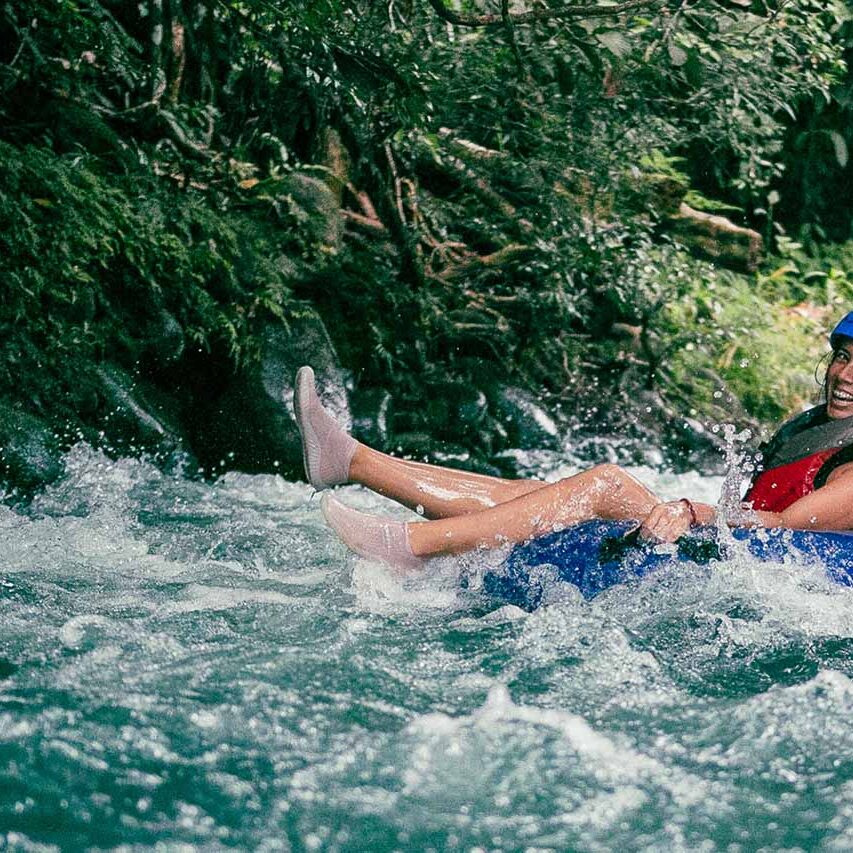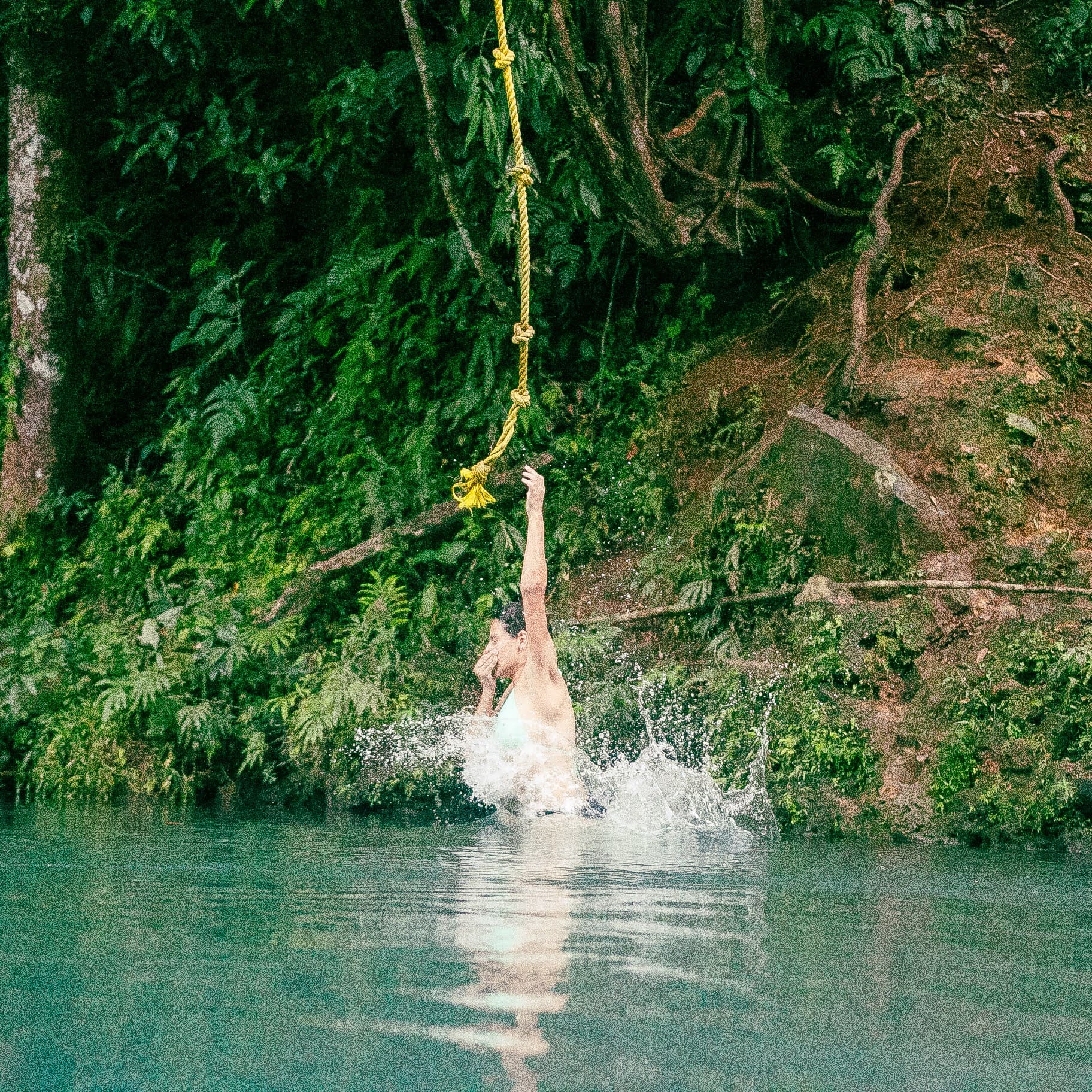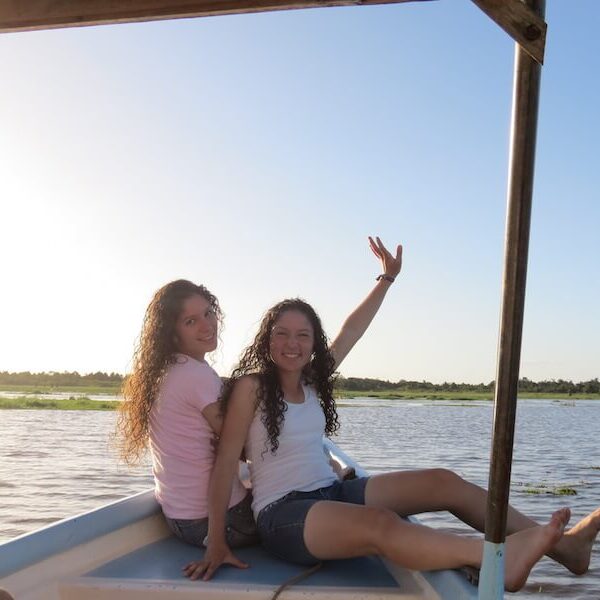If you’re planning a trip to Costa Rica in January, expect warm, sunny days with mild temperatures, making it one of the best months to visit. The Pacific Coast and Central Valley experience their dry season, offering ideal weather for exploring beaches and cities, while the Caribbean coast remains lush and slightly rainy but still pleasant. Whether you’re hiking through rainforests or relaxing on the beach, January brings a variety of climates, so packing the right gear for regional differences is key. Here’s a breakdown of what to expect in each region, the range of temperatures, precipitation levels, and tips on what to pack for a comfortable adventure.
Listen to the short version of this blog:
About the weather in Costa Rica in January
In this blog:
- The average temperature in January
- Regional temperatures range in January
- Precipitation in January
- What to pack for January weather in Costa Rica
- Activities to enjoy in Costa Rica in January
The Average Temperature in January
In January, Costa Rica’s weather is primarily warm and dry in most regions, with temperatures varying significantly depending on where you are.
- Central Valley (San José): Enjoys cooler, comfortable weather, averaging 19°C (66°F).
- Caribbean Coast: Stays hot and humid, with average temperatures around 28°C (82°F).
- Mountainous Regions: Expect chilly mornings and nights, with temperatures dipping to about 10°C (50°F).
For travelers, this means that January is generally mild and enjoyable. The sunny weather makes outdoor activities like hiking, wildlife viewing, and beach lounging highly appealing, though you should always be prepared for some variations in temperature depending on where you go.
Regional Temperature Ranges in January
Costa Rica’s geography creates different weather experiences based on the area:
- Northern Costa Rica (Volcán Tenorio): January temperatures average around 25°C (78°F), with highs of 32°C (90°F). Cooler temperatures of 10°C (50°F) can occur at night.
- Rio Celeste: This popular destination in the northwest has an average of 23°C (73°F), with lows of 13°C (55°F)and highs reaching 31°C (88°F).
- Puntarenas (Southern Pacific Coast): Known for its beaches, the average temperature is 22°C (71°F), with highs of 31°C (88°F), making it ideal for beach vacations.
- Southern Costa Rica (near Panama): Slightly warmer, with temperatures averaging 25°C (77°F) and highs of 32°C (90°F).
Regardless of your destination, Costa Rica in January is perfect for enjoying the outdoors, but bringing layers will ensure you’re prepared for cooler evenings or higher elevations.
Precipitation in January
While the Pacific and Central regions are enjoying their dry season, the Caribbean coast can still experience some rain. Here’s a breakdown of expected precipitation:
- Tenorio Volcano Region: Expect an average of 13.2 inches of rainfall in January. Though showers are common, they rarely last all day.
- Rio Celeste: Slightly less rainy with about 10.6 inches of rain in January.
- San José: The capital and Central Valley region remain relatively dry, with 8.9 inches of rainfall, mostly in brief afternoon showers.
Even in rainier areas, the showers are typically short-lived, leaving plenty of time to explore between rain spells. Make sure to pack a light rain jacket if you plan to visit the Caribbean or mountainous regions.
What to Pack for January Weather in Costa Rica
Given Costa Rica’s varied climate zones, you’ll want to pack smart for your January trip:
- For the Pacific Coast:
- Clothing: Lightweight clothing like shorts, t-shirts, and tank tops made from breathable fabrics.
- Sun Protection: Sunscreen, a hat, and sunglasses to protect yourself from the strong sun.
- For the Highlands or Mountainous Areas:
- Layers: Light jackets or sweaters for cooler mornings and evenings.
- Warm Clothing: Long pants and thicker sweaters for higher elevations.
- Rainy Areas (Caribbean Coast):
- Rain Gear: A waterproof jacket, umbrella, and waterproof shoes.
- Accessories: An umbrella or poncho for unexpected showers.
- Footwear: Comfortable shoes suitable for walking on the beach or hiking in the jungle.
By packing for various climates, you’ll be ready for whatever Costa Rica’s January weather throws your way!
Activities to Enjoy in Costa Rica in January
With mostly dry and sunny conditions across much of the country, January is an ideal time for outdoor activities. Here are some top recommendations:
1. Explore Rio Celeste
Located in Tenorio Volcano National Park, this stunning blue river is a must-see. You can hike through the park’s rainforest, marvel at the bright blue water caused by a natural chemical reaction, and take in breathtaking views of the surrounding nature. Rio Celeste is also a great place to go tubing, riding the river’s gentle current while enjoying the stunning scenery around you.
2. Beach Days on the Pacific Coast
Head to popular beach towns like Tamarindo, Manuel Antonio, or Santa Teresa for sunny days, warm ocean waters, and great surf. The weather is perfect for swimming, sunbathing, and water sports.
3. Wildlife Viewing
January is perfect for exploring Costa Rica’s many national parks, such as Corcovado National Park or Manuel Antonio National Park, where you can spot monkeys, sloths, toucans, and other exotic wildlife.
4. Adventure Activities
Whether it’s zip-lining in Monteverde, white-water rafting on the Sarapiquí River, or snorkeling in the pristine waters of Cahuita, January’s weather makes these adrenaline-pumping activities even more enjoyable. Consider joining one of the many adventures offered by local tour companies like Onca Tours, which provide guided experiences through the country’s diverse landscapes.
January is one of the best times to visit Costa Rica. With mostly dry weather, comfortable temperatures, and a wide range of activities to enjoy, you’re sure to have an unforgettable trip. Whether you’re soaking up the sun on the beach, hiking through rainforests, or exploring vibrant cities, Costa Rica’s diverse landscapes and climates offer something for every traveler in January.
Make sure to check the local weather forecasts and plan your packing list accordingly, and you’ll be all set for an incredible adventure!





















